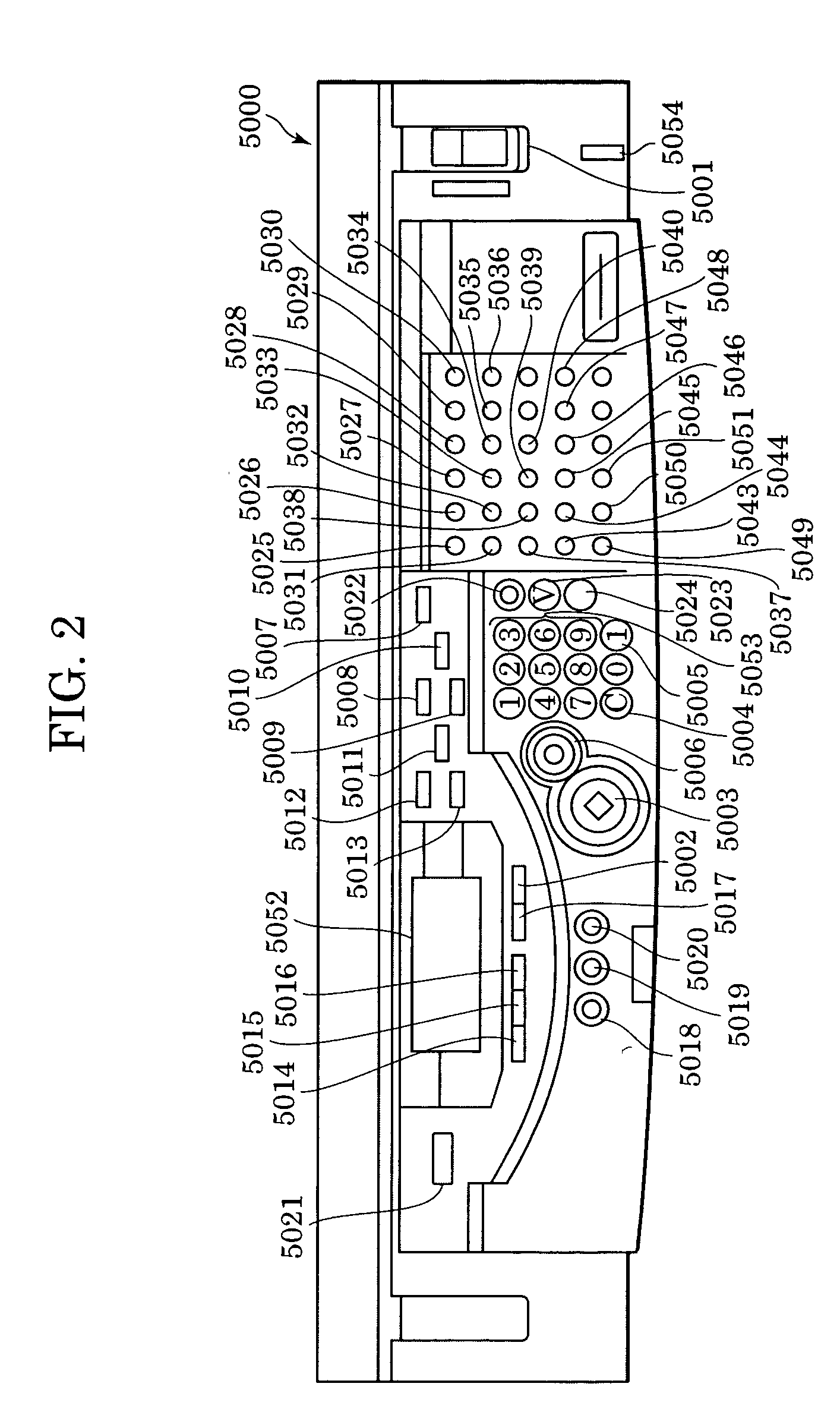Image formation device
a technology of image formation and transfer paper, which is applied in the direction of electrographic process, instruments, corona discharge, etc., can solve the problems of transfer paper shrinkage, and it normally takes 15 to 20 minutes for the original size of shrunken transfer paper to recover
- Summary
- Abstract
- Description
- Claims
- Application Information
AI Technical Summary
Benefits of technology
Problems solved by technology
Method used
Image
Examples
first embodiment
[0030]FIG. 1 is a cross-sectional view of an electro-photographic digital copier according to the present invention. Operation of the digital copier will also be described with reference to FIG. 3, which illustrates an image formation process from a photo-electric conversion step to a latent-image formation step performed by the digital copier.
[0031] Among other components, the digital copier according to the present embodiment includes a scanner 310 and a printer 330. The scanner 310 includes a document feeder 1 which feeds original documents disposed thereon one by one to a glass base 2. Moreover, the scanner 310 further includes a scanner unit 4 which contains a lamp 3 and a scanning mirror 5. While the lamp 3 is turned on, the scanner unit 4 is capable of moving back and forth in the horizontal direction in FIG. 1 so as to photoscan an image of each document disposed on the glass base 2. In this case, the light reflected from the document, i.e. image light, travels through scann...
second embodiment
[0063] To switch the rotational rate of the polygon motor 110, i.e. the main-scanning rate, in a multilevel manner, the number of PWM conversion tables T, i.e. the number of the rules, may be increased. Furthermore, for continuously performing double-sided recording or multilayer recording on multiple sheets of transfer paper of the same paper type, the shrinkage or expansion proportion calculated for the first sheet of transfer paper may be used for the second and additional transfer papers. This can reduce the workload on the CPU 117. This concept applies to the present invention, which will be described later.
[0064] According to the first embodiment, when image formation is to be performed multiple times on a sheet of transfer paper having an image fixed thereon, the rotational rate of the polygon motor 110, i.e. the main-scanning rate, is switched so as to prevent inconsistent sizes of the formed images due to shrinkage or expansion of the transfer paper. Moreover, an appropriat...
third embodiment
[0071] In other words, referring to FIG. 8, the CPU 117 in the main controller 116 sends an intensity compensation signal S409 to the laser driver 114 based on a shrinkage or expansion proportion of the transfer paper determined by the optical sensor 26. In this case, a PWM conversion table T in the PWM 105 is constant regardless of the main-scanning rate based on the shrinkage or expansion proportion of the transfer paper.
[0072]FIG. 9 illustrates the internal structure of the laser driver 114 and the laser unit 106. The laser unit 106 defining an optical scanner of laser beams includes a laser diode 404, and a photo-diode 405 disposed adjacent to the laser diode 404. Some components of a laser beam from the laser diode 404 are received by the photo-diode 405, and are amplified by a monitor amplifier 406. Thus, a signal S407 proportional to the intensity of the emitted laser beam is obtained. Subsequently, the signal S407 is compared with a laser-beam target-intensity standard sign...
PUM
 Login to View More
Login to View More Abstract
Description
Claims
Application Information
 Login to View More
Login to View More - R&D
- Intellectual Property
- Life Sciences
- Materials
- Tech Scout
- Unparalleled Data Quality
- Higher Quality Content
- 60% Fewer Hallucinations
Browse by: Latest US Patents, China's latest patents, Technical Efficacy Thesaurus, Application Domain, Technology Topic, Popular Technical Reports.
© 2025 PatSnap. All rights reserved.Legal|Privacy policy|Modern Slavery Act Transparency Statement|Sitemap|About US| Contact US: help@patsnap.com



